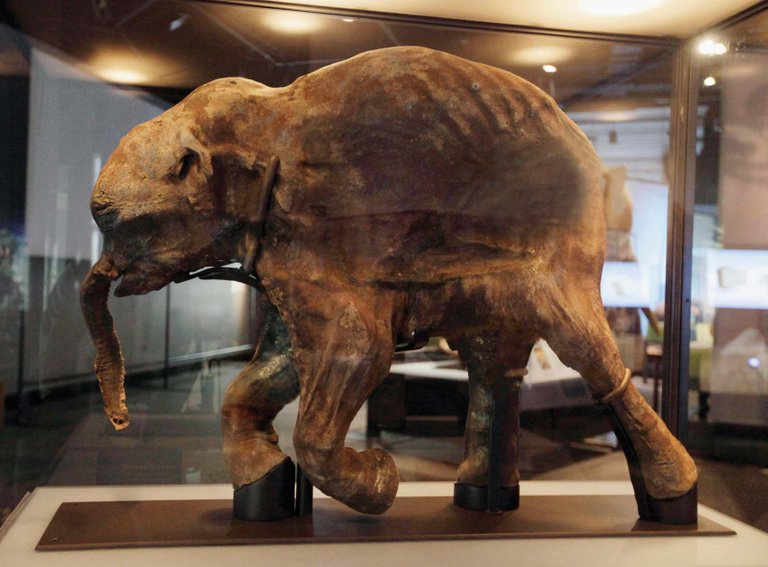Prehistoric Elephant, the Mammoth
The mammoth is an extinct mammal that was related to the mastodon and modern day elephants. The Mammoth survived much longer than most prehistoric mammals; they lived from 4.8 millions years to 4,500 years ago. Unlike most prehistoric animals, scientists have found mammoth bodies that still have hair and DNA. The word mammoth comes from the Russian word mamont, which roughly translate to “Earth Horn”.
Mammoths are a very popular and well know prehistoric animal. The indigenous people of Siberia found the first mammoth skeletons. They sold the mammoth tusks they found for ivory. The Siberian indigenous people thought the mammoth was a gigantic mole, not an elephant. In 1728, British scientist Hans Sloane went to Siberia to research the giant mole bones that he had heard about, and found that the bones did not belong to a gigantic mole or a mythical creature, but to a large elephant. In 1798, a French scientist proved that the bones found in Siberia did not belong to an elephant species alive then, but to one that lived on Earth long ago. In 1806, mammoth skeletons were found in North America.
Most people believe that mammoths were far larger than today’s elephants and that they were all hairy, but this assumption is wrong. On average, mammoths were about the same size as Asian elephants, with exceptionally large males reaching African elephant size. Most weighed 5-7 tons, but extremely large mammoths might reach up to 12 tons. There was five different species of mammoth, and three of them did not have fur. Both the Woolly Mammoth and the Dwarf Mammoth of Wrangel islands had thick weather resistant fur. The Dwarf Mammoth of California’s Channel Island, the Dwarf Mammoth of the Islands of Sardinia and the Columbian Mammoth were all hairless.
Like all elephants, mammoths were herbivores. They ate tree leaves, grass, wheat, and sometimes large fruits in the springtime or when available. Being so large, they had only a few predators; a pack of dire wolves could take down a weak or young mammoth, so could a pair of Smilidon. However, the greatest hunter of mammoths was prehistoric humans. Scientists believe that they created large pits to trap and kill mammoths in, or much like the Native Americans did to the bison, chased them with fire and loud noises over cliffs.
No one knows for sure why mammoths went extinct. Some scientists believe that climate change was responsible, others believe over hunting was, while others believe both climate change and over hunting was the cause of their extinction. Due to mammoth remains being found with intact DNA, some scientists believe they can be cloned. A news report stated that a group of Japanese scientists are working on producing a mammoth embryo that they can implant in an African Elephant. If all goes as they plan, the first mammoth to walk this Earth in thousands of years may be born in the next few years.
Sources
- https://www.thoughtco.com/mammoths-and-mastodons-171039
- https://www.sciencenewsforstudents.org/article/mammoth-modern-elephant
- https://reviverestore.org/projects/woolly-mammoth/
- https://www.wbur.org/commonhealth/2018/02/27/elephant-dna-mammoth
Posted with STEMGeeks

